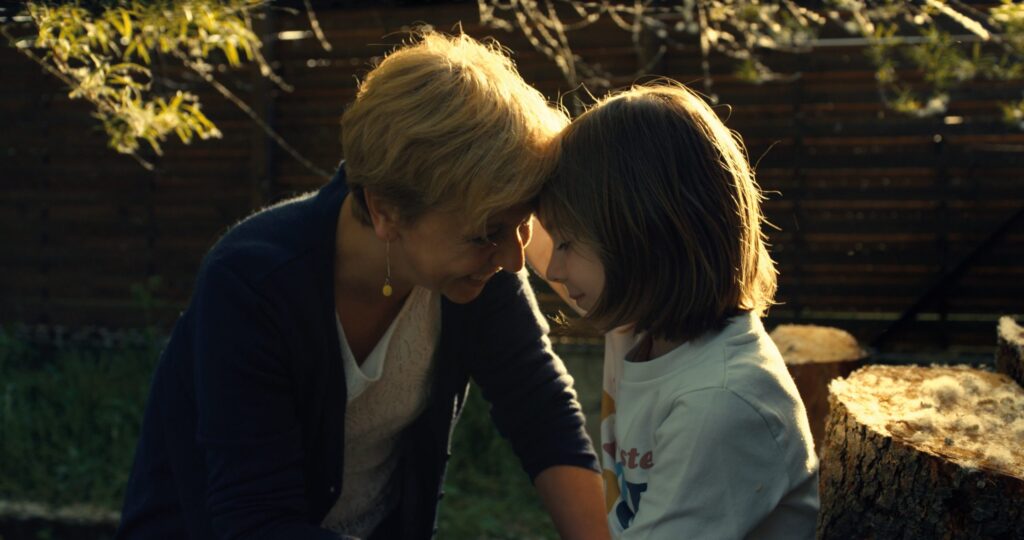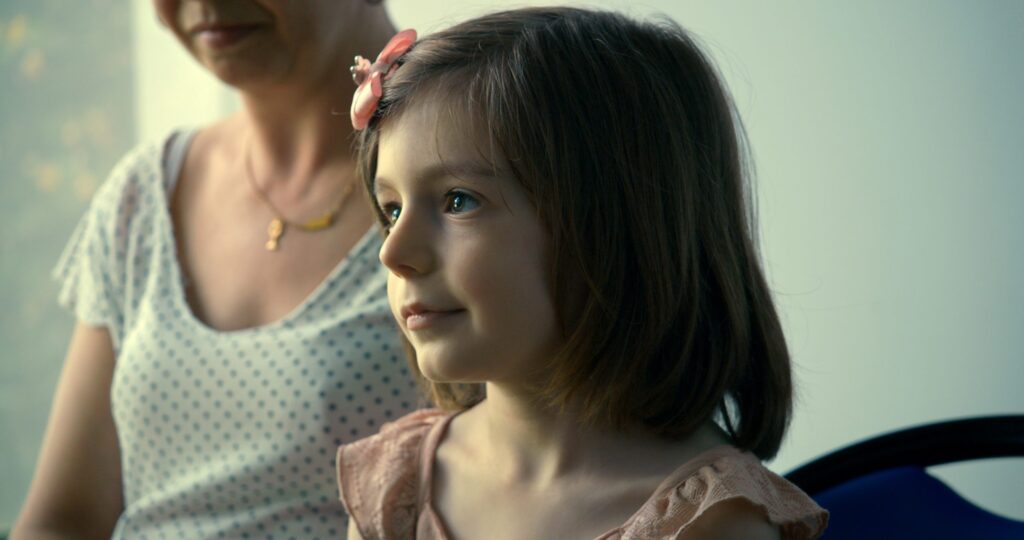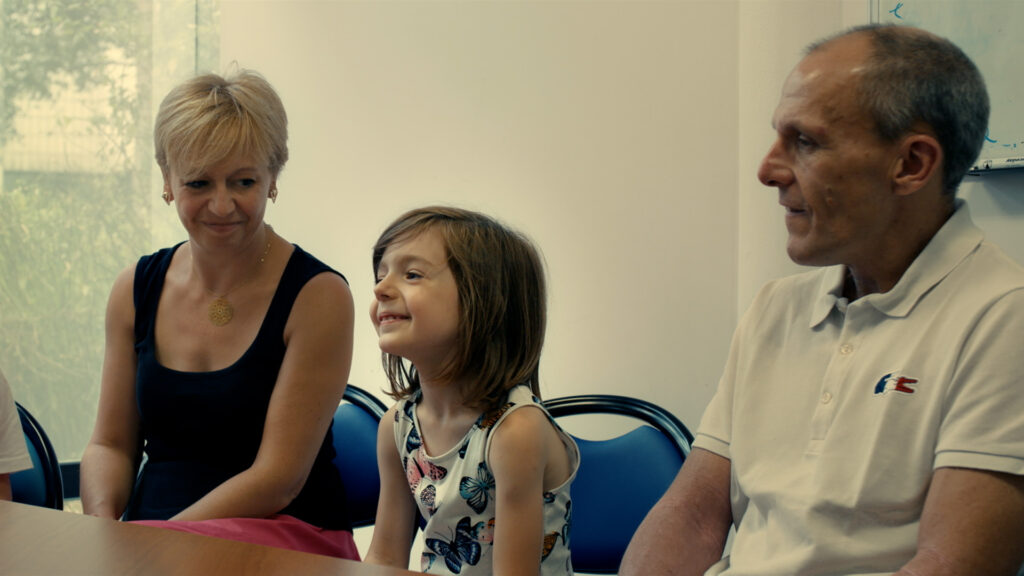Acclaimed transgender documentary ‘Little Girl’ comes out on DVD
The French director Sébastien Lifshitz has made a groundbreaking film about a family raising a transgender child, released on DVD/Blu-Ray on Jan. 18.
LITTLE GIRL is the moving portrait of 7-year-old Sasha, who has always known that she is a girl. Sasha’s family has recently accepted her gender identity, embracing their daughter for who she truly is while working to confront outdated norms and find affirmation in a small community of rural France. Realized with delicacy and intimacy, Sébastien Lifshitz’s documentary poetically explores the emotional challenges, everyday feats, and small moments in Sasha’s life.
Born in Paris, Sébastien Lifshitz studied art history at the famed Ecole du Louvre. He directed the fiction films, Come Undone, Wild Side and Going South, with Léa Seydoux. Mostly, however, he is a documentary filmmaker, focusing particularly on French queer experiences and contemporary LGBTQ life. Invisibles won the 2017 César award for Best Documentary; Adolescents, which followed two teenage girls during five years, won Lifshitz three 2020 César awards including Best Documentary. Little Girl is his latest film.
What inspired you to make Little Girl?
A few years ago, I made a film about Bambi, one of France’s first transsexuals, who was born in 1935. She told me that, as early as 3-4 years old, she sensed deep inside that she was a little girl. That gave me pause because usually, when the subject of trans identity comes up, it is assimilated with adolescence, with puberty, the moment when the body changes. Bambi’s account opened my eyes to the fact that it could occur much earlier in the life of a trans person. I also realized that the identity issue was totally separate from questions of sexuality that crop up in adolescence. I felt it was essential to tell the story of a contemporary child experiencing those identity issues to get a better grasp of these questions.
How did you find Sasha and her family?
While I was editing Adolescentes, I pitched the idea to my producer, Muriel Meynard. Soon after, we began the search for our protagonist, half-convinced that it would take forever to find a family that would agree to be filmed. It felt like mission impossible. Where do you find a trans kid? It occurred to us to go online and post a message on forums where the parents of children with gender dysphoria share their experiences. The initial reaction from some people, who were very wary, was irate. Without knowing who we were, they accused us of being obscene or voyeuristic, as a knee-jerk reaction. We tried to explain that our approach was, on the contrary, completely respectful of the people concerned and that the film aimed to raise awareness and acceptance of trans identity. In the end, two families replied: one in Canada and the other in France. The Canadian family told us, very warmly, Come to see us! Here, society is totally understanding of issues of trans identity. There is a fantastic level of acceptance.

We were surprised, dumbstruck almost. And then, there was Karine, Sasha’s mother, who very cautiously told us that she had a child in the situation we described, and she was wondering whether it was a good idea or not to tell that story, Sasha’s story. We began by messaging each other, then Karine asked to meet us, without Sasha at first. That first meeting was overwhelming. We were both overcome by emotion. There was immediate trust and affection. At our second meeting, over milk and cookies, I met Sasha and her whole family.
They seem like the ideal family.
What I saw the very first time is what you see in the film. They are an extremely solid, united family. There is a bond of unconditional love between them, which you perceive without filters. Most likely, it’s due to what Sasha is going through: her family has come together around her to protect her. I tried to capture this unity by showing the house as a kind of bubble in which Sasha and her loved ones are safe to live their lives. There is a greater sense of threat around it, on the outside, at school, in ballet class or just on the street. Fortunately, Karine is honed to anticipate threats, and to respond to them.
Did they immediately agree to make the film with you?
I was cautious. I started by offering to film them just for one day, to give them an idea of what a film shoot entails, with a crew taking over your house. That first day is in the film, when the kids have a snowball fight in the backyard. I remember there was an immediate sense of grace, such powerful emotion that, all the way back to Paris, the crew and I wondered what had happened. The family adopted us from the get-go, and we loved them unreservedly.
How did you manage to film their home life without intruding?
I work with a very small crew: DP, sound recorder and production assistant. What matters is that every member of the crew is accepted and loved by the family. It’s not only me who has to forge close bonds with them. In the most natural way possible, we try to become part of their lives. It’s like any new relationship—you suddenly want to spend days, weeks or months together. The family adopted us from the get-go because they sensed that we were like a second protective circle around Sasha.

When and how did Sasha show that she accepted your presence in her world?
Sasha was fully aware of the camera. She’s not at all a child who has no idea what she’s doing. For example, on one of our first shooting days, I asked her if we could film her in her bedroom. She was a little hesitant because, besides her brothers and sister, nobody goes in there. It’s her realm. Nobody at school knows her bedroom is a little girl’s room. It’s like a secret room. By allowing us in, she demonstrated a level of trust —she was letting us into her life. I told her I’d like to film her while she was playing. She looked at me, as if taken aback. We set up the camera in the bedroom, composed the shot, and then she sat down on her bed and stared at the camera. I asked her, “Aren’t you going to play?” And she replied, “No. When I play, usually I’m alone.” She couldn’t play-act, pretending she was alone, when we were there. For her, it was senseless, or else she’d have become an actress, so she refused. I found her resistance wonderful.
There was another time, too, when we were filming in her bedroom. We realized she wasn’t paying any attention to us, probably thinking we were setting up the camera. She was playing on her bed, leaning over the side with her head upside down. Suddenly, she realized we were filming her and she gazed into the lens, as if to make sure we were watching, as if to say, “Yes, I’ll let you film me here, in this private space.” It was very powerful.
You shoot at children’s eye-level.
It was crucial, and I was very attentive to that throughout the shoot. Whenever possible, the film adopts Sasha’s point of view. The camera is with her, as close as possible, at her eye level, and that’s what allows us to create a bond of empathy and to understand what she’s going through.
Tell us what you have observed about the gender norms imposed upon children.
The violence that Sasha endures, I felt it very strongly. It even became an issue for us in filming. The school put obstacles in our path throughout the shoot. The idea of someone making a film about Sasha and her family freaked them out. It took them an awful long time to accept her as a little girl. The film heaped more pressure on them. With regard to the hospital, even if the location seems cold and medicine attempts to rationalize everything, the child psychiatrist showed unbelievable humanity in her approach to Sasha. Her role is to help Sasha articulate what she is experiencing and what she is feeling deep inside. It cannot be rushed. If she has nothing to say, it’s not a problem. It’s a support structure that is put in place for years and that Sasha can call on for help when she needs to. There is no obligation. Everything can be reversed…

You show how the family must seek out allies. The lack of people they can turn to is striking.
When I first met Karine, she was at the end of her rope, exhausted by years of looking for someone who could help her understand and support Sasha. Where she lives, in Northeastern France, there is nobody she can talk to about it. The few people who might be able to guide her, such as the family doctor, have so little training on the subject that their statements tend to be blaming rather than helping, not out of mean-spiritedness but ignorance. It can make them dangerous. I was the person who told Karine there was a department for children with gender dysphoria at Robert Debré children’s hospital in Paris. For her, it was a glimmer of hope. The first consultation with the child psychiatrist is a long and moving scene. It provides both an overview of everything the family has withstood for so many years and a beginning-point for the acknowledgement of Sasha’s suffering. Karine asks questions that have been preying on her mind for years. “Did I do something wrong? Did wanting a girl while I was pregnant cause Sasha’s gender dysphoria? Was it the right decision to let her dress as a little girl?”
The child psychiatrist’s answers are so liberating. In a few minutes, years of guilt and anxiety evaporate. I hope that those answers will be heard by people. The educational slant of the film is deliberate.
filmmaker Sébastien Lifshitz
Of course the film is also about Sasha’s mother. What struck you about Karine’s relationship with her daughter?
I truly saw Karine ready to go to any lengths to defend her child. Her battle is non-negotiable. Any opposition, any attack, any judgments regarding Sasha will always provoke a scathing reply from her. What I found admirable about Karine is that she is also aware of the collateral damage. She knows that a child like Sasha monopolizes her attention. She has, therefore, less time for her other children. She actually tries to explain to them that the fight demands sacrifices. It’s hard, but that’s how it is. At one point, one of her sons, Vassily, tells her that he understands, she has no choice. I found the maturity of that 10-year-old unbelievable. His understanding of the battle they are fighting is total.
Little Girl comes out on digital and VOD on November 16.
This interview was conducted by Quentin Grosset and first appeared in TROISCOULEURS.





